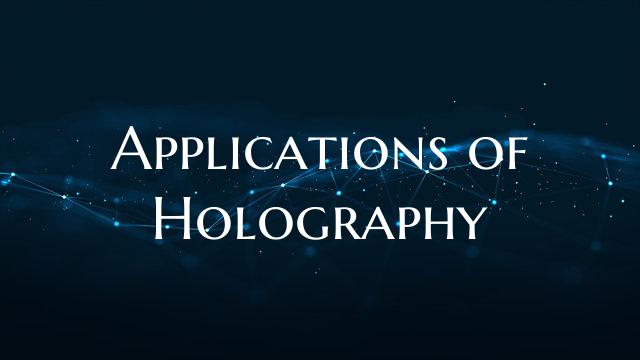Applications of Holography
Holography, the technique of creating three-dimensional images using the principles of light interference, has a wide range of applications across various fields. From art and entertainment to security and scientific research, holography has proven to be a versatile technology with numerous practical uses. In this article, we explore some of the most common applications of holography and how they are impacting different industries.
1. Art and Visual Displays: Holography has revolutionized the art world by providing artists with a unique medium to create stunning three-dimensional artworks. Holographic displays are also used in museums and galleries to enhance exhibitions and engage visitors in interactive installations. Moreover, holographic projections are increasingly being used in live performances and events to create captivating visual effects that mesmerize audiences.
2. Security and Authentication: One of the most significant applications of holography is in security and authentication. Holographic techniques are used to produce secure and tamper-evident labels, ID cards, passports, and currency, making it difficult for counterfeiters to replicate. The intricate patterns and optical properties of holograms make them an essential tool in anti-counterfeiting measures across various industries.
3. Medical Imaging and Healthcare: In the field of medicine, holography is utilized for imaging and diagnostics, enabling healthcare professionals to visualize complex biological structures with high precision. Holographic technology is used in medical imaging techniques such as holographic microscopy, holographic tomography, and holographic endoscopy, providing detailed insights into tissues and cells for improved diagnosis and treatment planning.
4. Data Storage and Optical Computing: Holographic data storage is a promising technology that offers significantly higher storage capacity and data transfer rates compared to conventional storage devices. By storing data in three dimensions using holographic patterns, researchers are exploring the potential of holography for next-generation data storage solutions. Additionally, holographic optical elements are being developed for optical computing applications, offering faster processing speeds and improved efficiency in computing systems.
5. Scientific Research and Engineering: Holography plays a crucial role in scientific research and engineering applications, enabling researchers to study complex phenomena and visualize intricate structures in various fields. Holographic interferometry is used in fluid dynamics, structural analysis, and non-destructive testing, providing valuable insights into material behavior and mechanical properties. Furthermore, holographic techniques are employed in aerospace, automotive, and semiconductor industries for quality control and testing purposes.
Overall, the applications of holography continue to expand and diversify, driving innovation in numerous sectors and offering new possibilities for creative expression, advanced technology, and scientific discovery. As researchers and engineers explore the potential of holographic capabilities, we can expect to see further advancements and applications that push the boundaries of what is possible with this fascinating technology.

